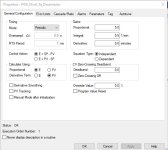MaxK
Member
WHY IS A PID NECESSARY?
A person uses PID auto-tune, therefore he cannot write a closed-loop equation, therefore he cannot know that the closed-loop integrator with a proportional in the feedback is a first-order lag (the gain on the SP channel is 1, and on the disturbance channel 1/kp ), hence personuses PID autotune...
Am I the only one who thinks that asking questions to which the answer is obvious is, shall we say, an ineffective exercise?
The above answers the question "Why is PID used?" or in other words, “why does the OP think that PID is necessary?”
If you need to answer the question “is PI necessary or P-only is enough?”
We do not have sufficient information to answer this question (volumes, flows, actuator velocity, level deadband)
But in any case, all this does not matter at all, because the OP asked "Why doesn't PIDE autotune work?"
DrBitboy, I already suggested that you teach people the alphabet.
I think it makes sense for you to create a topic in which you will teach people to read (for example, manuals and what other participants write) and write (formulate questions, describe experiments done, give excerpts from documents). Thinking that it would be more time efficient to teach it in one topic instead of teaching it in every topic.
If you want to get complicated, then see this.
Ugh!!! And I was already starting to afraid that we wouldn’t get a Peter’s-link at this topic.
Peter, do you wonder why it doesn’t make sense to write a book “How not to be a dumb”?
- Because a smart person knows this without reading this book
A dumb will not read the book or will not understand what is written in it.
Level control is simple.
My personal nightmare "PID-closedloop-tuning" was level.






